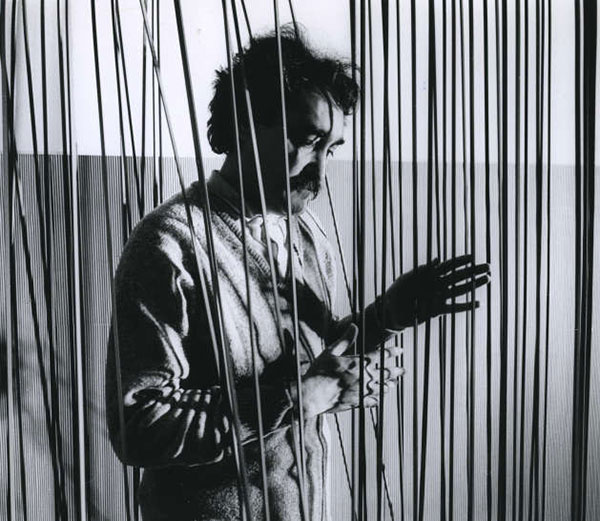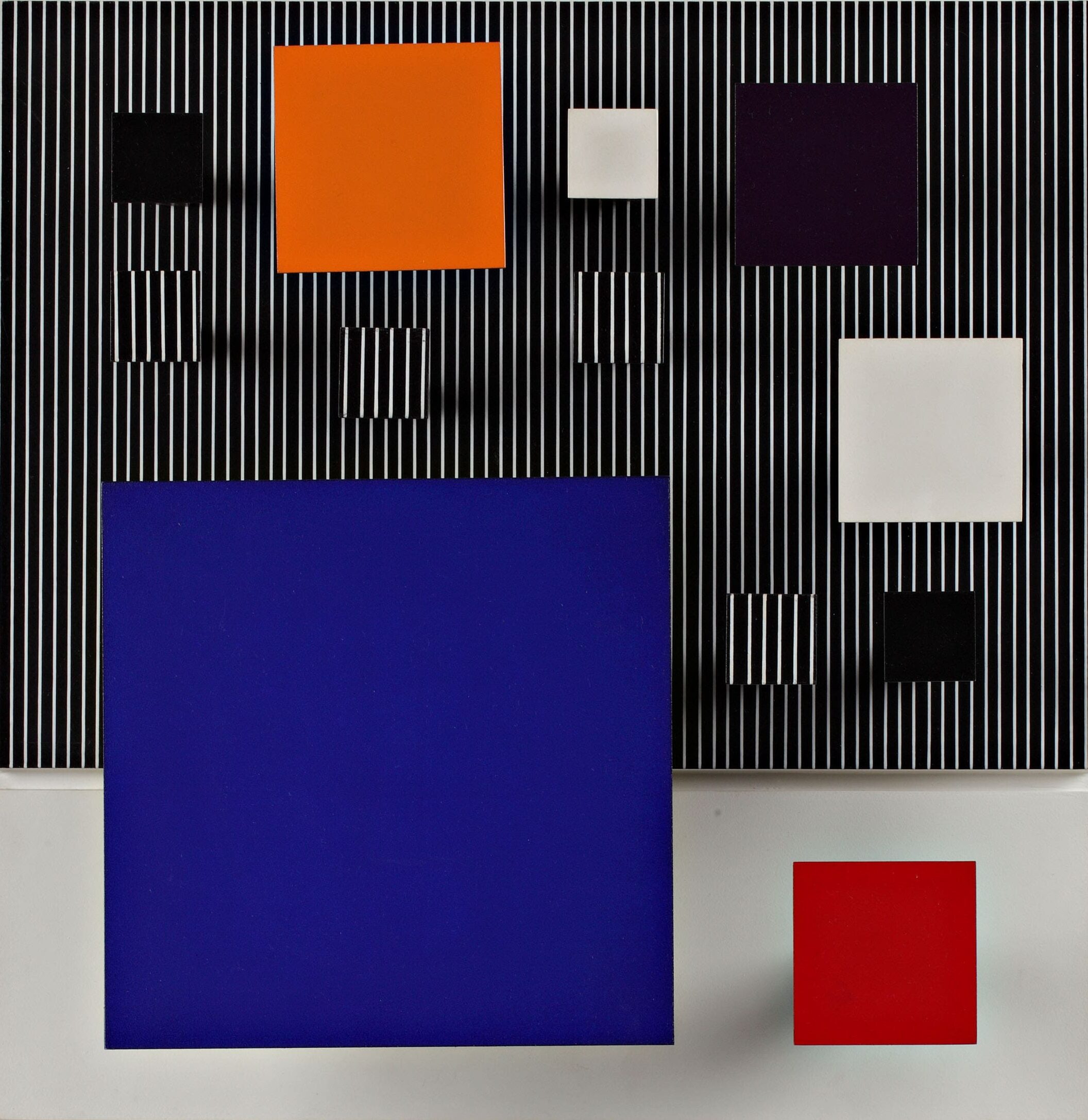Jesús Rafael Soto
Born in 1923 in Ciudad Bolívar, Venezuela, Jesus Rafael Soto studied at the Escuela de artes plásticas in Caracas from 1942 to 1947 and then served as director of the Escuela de bellas artes in Maracaibo, Venezuela, until 1950, at which time he moved to Paris. There he associated with Yaacov Agam, Jean Tinguely, and Victor Vasarely, as well as artists connected to Galerie Denise René and the Nouveau Réalistes (New Realists).
Having started out as an illusionistic painter, in 1955 Soto participated in Le mouvement at Galerie Denise René, the exhibition that effectively launched Kinetic art.
Soto’s work is often associated with Venezuelan Op art because the serial geometric forms of his paintings of the 1950s bear an affinity to works from that later movement. By 1957 Soto had moved toward a more gestural abstraction, but by 1965 he had returned definitively to a geometric idiom. During the same decade, he began making linear, kinetic constructions using industrial and synthetic materials such as nylon, Perspex, steel, and industrial paint.

